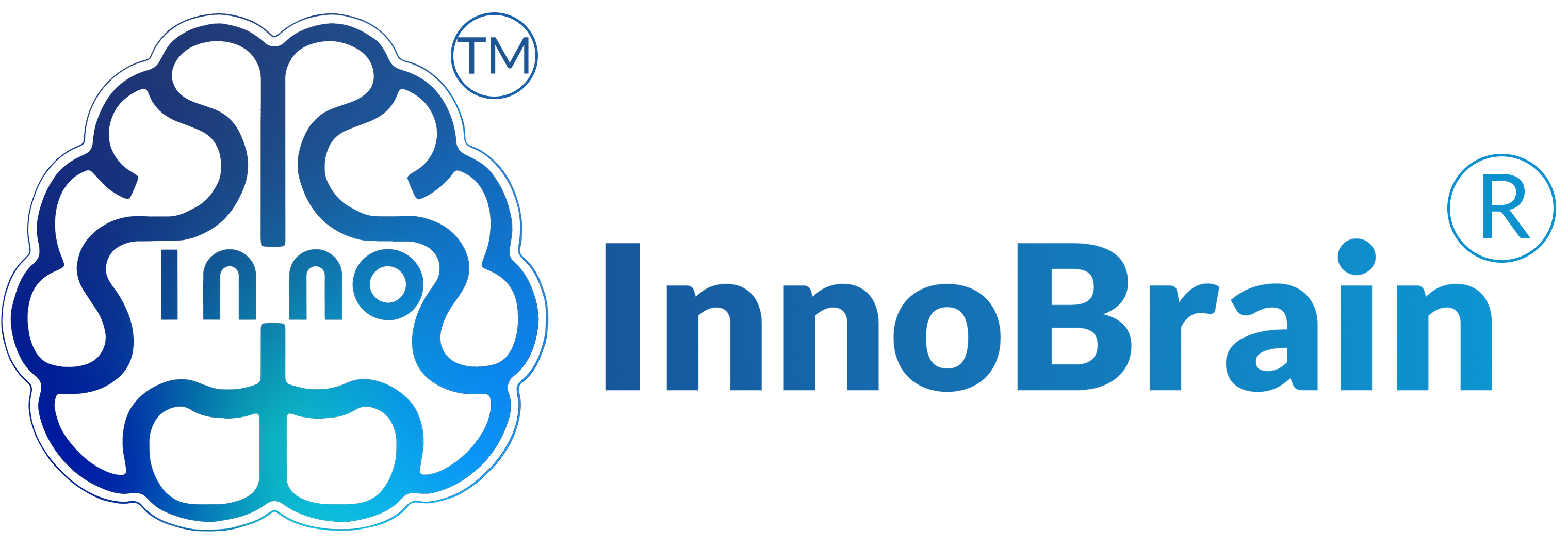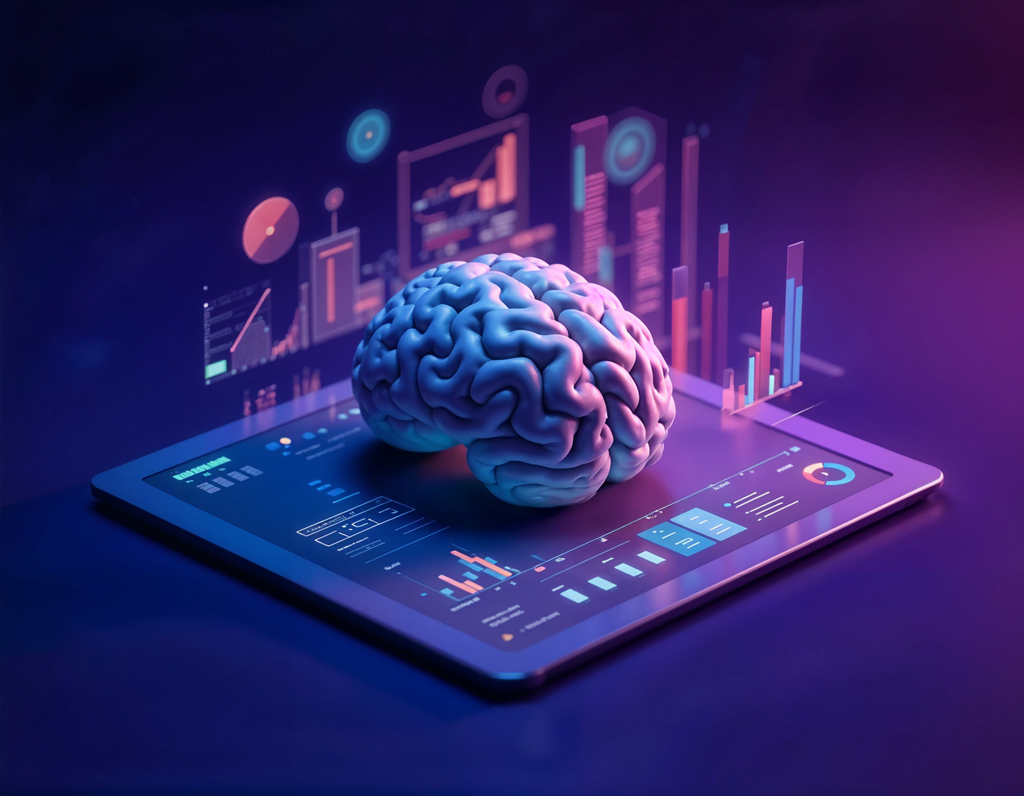In a world where performance, safety, and well-being are increasingly critical, understanding the human mind is the next frontier. InnoBrain’s Human Cognitive Monitoring platform leverages foundational AI models to enable real-time insights into critical mental states, empowering individuals and organizations to optimize human potential.
By continuously evaluating both chronic and acute cognitive states, our platform offers a comprehensive view of mental health. It captures stable brain conditions while dynamically tracking changes in cognitive performance over time. This dual-layered approach delivers precise, actionable insights to support better mental well-being, enhanced performance, and early detection of potential risks.
A. Chronic Cognitive State
We report cognitive states that reflect more stable mental health conditions. These states are associated with conditions that consistently affect a person’s cognition and emotions.
- Sleep Problems:
- Sleep Deprivation: Detecting patterns of insufficient sleep duration or quality [1].
- Insomnia: Identifying patterns related to difficulty falling/staying asleep or waking too early [2].
- Burnout detection:
- Burnout Indicators: Recognizing characteristics of chronic exhaustion, cynicism, and reduced efficacy resulting from prolonged stress [3].
- Mood & Well-being:
- Depression Indicators: Detecting patterns associated with persistent sadness, hopelessness, and negative thoughts [4].
- Anxiety Indicators: Identifying patterns linked to excessive worry, nervousness, and restlessness [5].
B. Deeper Insights from Temporal Dynamics
Examining how stress, concentration, and mental workload evolve over time provides richer insights than static snapshots. We are developing features to analyze these patterns:
- Stress Management: Analyzing how quickly and effectively individuals regulate their stress levels during challenging tasks. This reveals insights into coping skill effectiveness and helps to identify individuals who struggle to regulate their stress levels.
- Mental Exhaustion: Tracking the emergence of this psychobiological state, which is triggered by sustained cognitive effort [6], involves a decline in focus, decision-making, and overall performance. Monitoring helps optimize performance in demanding jobs and prevent burnout.
- Learning Curve: Mapping how task difficulty perception and performance change as individuals gain familiarity and adapt their strategies. Monitoring learning trends informs educational tailoring, learning capacity, and adaptive technology development.
C. Monitoring Mental States in Real Time
- Mental Workload: Balancing the Brain’s Capacity
Mental workload reflects the cognitive resources required to meet the demands of a task [7]. It indicates the mental effort needed and how demanding a task feels. When demands are too high, cognitive overload can occur, hindering focus, information processing, and decision-making. Conversely, if the workload is too low, boredom can set in, also leading to decreased performance [8]. Real-time monitoring of mental workload enables proactive measures to prevent cognitive overload or underload, identifying moments of overwhelm or exhaustion due to excessive task demands or prolonged cognitive effort. - Concentration: One thought, one goal
Imagine attending a cocktail party. It’s crowded, and the music is loud. You struggle to hear your friend speak, but you manage to tune out the background noise to focus on their voice. This takes concentration—the ability to pick out and maintain focus on a relevant stimulus while ignoring irrelevant distractions [9]. By tracking concentration in real time, we can detect significant drops in focus and attention. - Stress: The mind on overdrive
Stress is a natural response of worry or tension triggered by challenges or threats [10]. Analyzing how stress patterns evolve over time provides valuable insights into individuals’ coping mechanisms and the effectiveness of their stress management strategies. Real-time stress monitoring helps identify stress levels and triggers, enabling timely interventions to promote well-being, enhance productivity, and manage emotional responses. - Calmness: Cultivating a quiet mind
Calmness is a state of low emotional tension and arousal, particularly the absence of negative emotions like anger, anxiety, or fear. People can lose calmness due to feeling overwhelmed, loss of control, conflict, uncertainty, physical discomfort, or high-stress environments. Meditation often helps individuals achieve a state of maximum calmness. Real-time calmness monitoring helps individuals who suffer from a busy mind and promotes better mental clarity by providing immediate feedback on their state of relaxation. This can lead to improved stress management, enhanced focus, and the ability to make more mindful decisions. - Fatigue: Shifting from Clarity to Haze
This metric assesses your fatigue level across four levels—Alert, Low Vigilance, Fatigued, and Sleep Onset—over time, indicating which level best reflects your psycho-physical state.- Alert: Fully awake, with no signs of fatigue.
- Low Vigilance: Mild fatigue emerges, slight focus loss.
- Fatigued: Moderate fatigue, requires effort to stay alert.
- Sleep Onset: Severe fatigue, difficulty, or inability to stay awake.
- Situational Awareness: Scan and Anticipate
Situational awareness is the state of being alert and watchful for potential risks, dangers, or environmental changes [11]. Real-time monitoring situational awareness helps to detect drops in awareness. - Motion Sickness: A Modern Challenge with Timeless Roots
Motion sickness—feelings of nausea, dizziness, and discomfort during perceived motion—isn’t just about travel. It’s relevant to modern technologies like VR and autonomous vehicles, space exploration, and general travel comfort. Real-time monitoring of motion sickness helps identify susceptibility, enhancing safety. It allows for adjustments in VR/gaming to improve user experience and guides interventions to alleviate symptoms.
What Our Platform Offers
Our platform integrates cutting-edge AI models to analyze EEG signals gathered in a package that provides:
- Advanced Cleaning Algorithms: A high-precision set of cleaning algorithms to provide meaningful and usable EEG data.
- Real-Time Monitoring: Track mental features such as stress, workload, motion sickness, and more with precision.
- Feedback on Data Quality: Ensure high-quality EEG recordings with guidance and tools to reduce artifacts.
- Comprehensive Reports: Gain comprehensive insights, including metrics on task performance and indicators of cognitive states and mental well-being, such as lapses in focus or signs of burnout.
- Personalized Normalization: EEG readings differ from person to person. Our platform normalizes data to account for individual differences, ensuring accurate and unbiased results that are meaningful across users.
Real-World Applications
By leveraging real-time insights into mental states, we empower individuals, teams, and organisations to:
- Optimize performance in demanding environments.
- Identify early signs of burnout
- Detect mental health conditions such as anxiety or depression
- Recognize patterns of poor or healthy stress management
- Spot mental exhaustion
- Monitor poor sleep hygiene
- Evaluating cognitive skills such as concentration
- Enhance safety in high-risk scenarios.
Our vision is to increase human well-being, safety, and performance by enabling scalable Brain-Computer Interface beyond labs, with a mission to build foundational AI models for advanced EEG analytics and to bridge the gap between cutting-edge neuroscience and real-world applications.
References
- Killgore, W. D. (2010). Effects of sleep deprivation on cognition. Progress in brain research, 185, 105-129.
- Morin, C. M., & Espie, C. A. (2007). Insomnia: A clinical guide to assessment and treatment. Springer Science & Business Media.
- Maslach, C., Schaufeli, W. B., & Leiter, M. P. (2001). Job burnout. Annual review of psychology, 52(2001), 397-422.
- Beck, A. T., & Alford, B. A. (2009). Depression: Causes and treatment. University of Pennsylvania Press.
- Spielberger, C. D., Gonzalez-Reigosa, F., Martinez-Urrutia, A., Natalicio, L. F., & Natalicio, D. S. (1971). The state-trait anxiety inventory. Revista Interamericana de Psicologia/Interamerican journal of psychology, 5(3 & 4).
- Van Cutsem, J., Marcora, S., De Pauw, K., Bailey, S., Meeusen, R., & Roelands, B. (2017). The effects of mental fatigue on physical performance: a systematic review. Sports medicine, 47, 1569-1588.
- Eggemeier, F. T., Wilson, G. F., Kramer, A. F., & Damos, D. L. (1991). Workload assessment in multi-task environments. In Multiple task performance (pp. 207-216). CRC Press
- Young, M. S., Brookhuis, K. A., Wickens, C. D., & Hancock, P. A. (2015). State of science: mental workload in ergonomics. Ergonomics, 58(1), 1-17.
- Sohlberg, M. M., & Mateer, C. A. (1987). Effectiveness of an attention-training program. Journal of clinical and experimental neuropsychology, 9(2), 117-130.
- https://www.who.int/news-room/questions-and-answers/item/stress
- Endsley, M. R., & Garland, D. J. (2000). Theoretical underpinnings of situation awareness: A critical review. Situation awareness analysis and measurement, 1(1), 3-21.
- Reason, J. T. (1978). Motion sickness adaptation: a neural mismatch model. Journal of the Royal society of medicine, 71(11), 819-829.
- Luck, S. J. (2014). An introduction to the event-related potential technique. MIT press.


